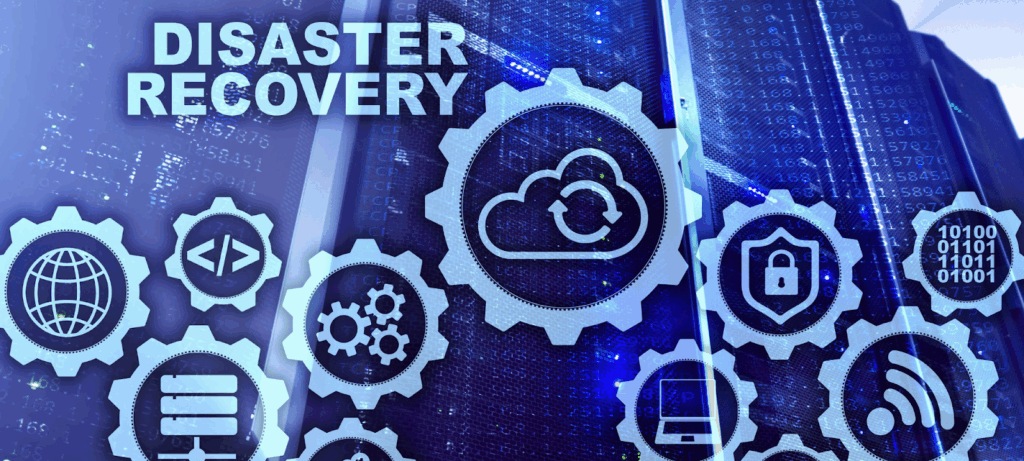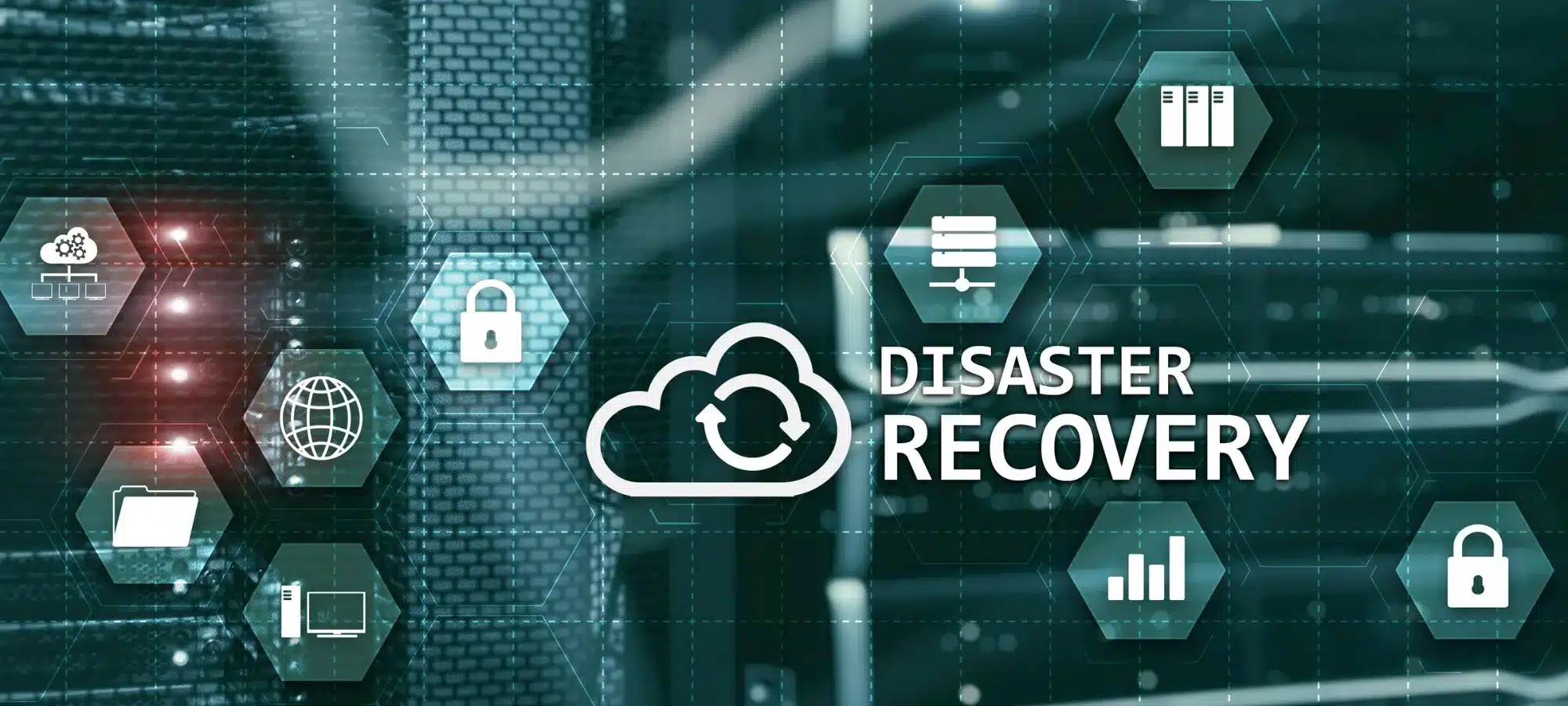
Is Your Business Truly Ready for Disaster?
Disaster recovery isn’t just an IT concern—it’s a business survival issue. Whether it’s a natural disaster, a cyberattack, or human error, the ability to restore operations quickly and efficiently determines how well your business weathers the storm.
Unfortunately, many companies don’t know if their disaster recovery plan will actually work until it’s too late.
This guide is designed to help you assess your disaster recovery readiness with clarity and purpose. We’ll walk through the essential elements of a disaster recovery plan, how to test it effectively, and what signs indicate you may not be as prepared as you think.
Understanding the Core of a Disaster Recovery Plan
At its heart, a disaster recovery plan (DR plan) outlines the structured approach your organization will take to recover IT systems, data, and business operations after an unplanned disruption.
An IT disaster recovery plan is a specific type of disaster recovery plan focused on restoring IT systems and data. A well-formed DR plan defines recovery procedures, responsibilities, communication strategies, and timelines to restore critical systems efficiently.
Organizations often develop multiple disaster recovery plans tailored to different business areas or types of disruptions.
Key components of a disaster recovery plan include:
- Recovery Point Objective (RPO): How much data your business can afford to lose in a disaster—usually measured in minutes or hours.
- Recovery Time Objective (RTO): The target time in which systems and operations must be restored after a disruption.
- Disaster Recovery Team: Individuals responsible for coordinating recovery efforts, including IT staff, leadership, and third-party service providers.
- Recovery Procedures: Detailed, step-by-step instructions for restoring systems, applications, and data in various disaster scenarios.
- Disaster Recovery Site: A secondary location or cloud-based infrastructure that serves as a fallback when the primary environment is compromised.
It’s important to note that disaster recovery plans are a subset of broader business continuity plans, which also include risk assessments and impact analysis to identify how various disasters can disrupt operations and affect financial stability.
Without these foundational elements in place, even the most sophisticated IT systems can experience prolonged downtime, leading to data loss, revenue impact, and lasting reputational damage.

Why Disaster Recovery Readiness Matters
Disaster recovery readiness isn’t just a technical concern—it’s a business imperative. Whether facing natural disasters, cyberattacks, hardware failures, or human error, the ability to recover quickly can make or break an organization’s future.
Prolonged downtime leads to:
- Loss of revenue and productivity
- Customer dissatisfaction and churn
- Regulatory penalties in data-sensitive industries
- Damage to reputation and brand trust
Being unprepared amplifies the impact of disaster scenarios, extending recovery time and complicating the recovery process.
A strong DR plan is essential for ensuring business continuity by helping to minimize downtime and guiding a structured, confident response during high-stress situations.
Disaster recovery readiness provides leadership with confidence, reassures stakeholders, and satisfies compliance requirements—all while protecting your most valuable asset: data.
Core Components of a Disaster Recovery Plan
A well-rounded disaster recovery plan (DR plan) combines strategic foresight with tactical execution. At its core, it addresses how an organization will recover data, restore critical systems, and resume business operations after a disaster occurs.
Key components include:
- Recovery Time Objective (RTO): How quickly systems must be restored to avoid significant disruption.
- Recovery Point Objective (RPO): The maximum acceptable amount of data loss, typically measured in time.
- Business Impact Analysis (BIA): Evaluates the impact of downtime on business operations to prioritize recovery efforts.
- Disaster Recovery Team: Identifies roles and responsibilities of key stakeholders before, during, and after an event.
- Recovery Procedures: Step-by-step instructions for restoring critical systems and data.
- Communication Plan: Outlines how internal and external communications will be handled during a disaster scenario.
- Testing Process: Defines how disaster recovery testing will be conducted to validate plan effectiveness.
Together, these elements form the foundation of any effective recovery strategy.
Using a disaster recovery plan checklist can help ensure all critical components are included, starting with defining the plan’s scope and objectives and detailing recovery procedures for different disaster scenarios.
Reviewing disaster recovery plan examples can also provide valuable guidance on best practices and how to structure your plan effectively.

Why Disaster Recovery Testing Matters
Disaster recovery testing is not optional—it’s essential. Without regular testing, even the most detailed disaster recovery plan (DR plan) remains unproven.
A disaster recovery test is a planned process where organizations verify that their IT systems and protocols can effectively respond to various disaster scenarios, such as data loss or network outages.
Testing validates your recovery procedures, highlights weaknesses, and confirms whether recovery time objectives (RTO) and recovery point objectives (RPO) are realistic.
Testing helps identify:
- Gaps in the recovery process that could delay restoration of critical systems.
- Outdated procedures or tools that may no longer be compatible with current IT infrastructure.
- Lack of clarity in team roles, especially in high-pressure disaster scenarios.
- Communication breakdowns that impact response coordination.
Conducting a DR test is a critical part of preparing and refining a disaster recovery plan. The DR testing process involves structured phases to validate recovery procedures for different scenarios, ensuring business continuity and data safety.
A disaster recovery testing plan ensures teams can confidently execute when disaster strikes. It also demonstrates to leadership and auditors that your organization is serious about business continuity and data protection.
Disaster recovery processes encompass both testing and implementation strategies to maintain business continuity.
Regular testing provides valuable insights into recovery capabilities, leading to improved resilience and minimized downtime.

Conducting a Business Impact Analysis (BIA)
A Business Impact Analysis (BIA) is the cornerstone of disaster recovery planning. It identifies which business processes are most critical and evaluates the impact of operational downtime. Without a BIA, organizations risk underestimating the consequences of disrupted systems.
A thorough BIA should:
- Identify critical systems and data required for business continuity.
- Estimate the financial and operational impact of system downtime across departments.
- Determine acceptable recovery time objectives (RTO) and recovery point objectives (RPO) for each business function.
- Prioritize recovery efforts to ensure the most vital operations are restored first.
By understanding the full scope of potential disaster scenarios, a BIA enables organizations to align disaster recovery strategies with actual business needs.
This leads to more accurate recovery planning, more efficient resource allocation, and faster restoration of business operations when disaster occurs.
Defining Recovery Objectives: RTO and RPO
Recovery Time Objective (RTO) and Recovery Point Objective (RPO) are two fundamental metrics in disaster recovery planning. Together, they define how quickly your organization needs to resume operations (RTO) and how much data loss is acceptable (RPO).
- RTO (Recovery Time Objective) defines the maximum acceptable amount of time that critical systems can be offline before serious impact occurs. It answers the question: How fast must we recover?
- RPO (Recovery Point Objective) defines the maximum age of files that must be recovered from backup storage to resume normal operations. It answers the question: How much data can we afford to lose?
Different systems have different RTO and RPO requirements. A financial transaction system may require near-zero downtime and zero data loss, while a less critical system might tolerate hours of delay and minimal data loss.
By assigning tailored RTOs and RPOs, organizations can prioritize resources and ensure recovery strategies match the importance of each business function.

Assessing Your Current IT Infrastructure
Before you can improve disaster recovery readiness, you need a clear understanding of your existing IT environment. This includes both hardware and software assets, networks, applications, and interdependencies between systems.
Start by inventorying your business critical systems—those that are essential for business continuity and must be prioritized in disaster recovery planning.
Identify the locations where data is stored, whether in a physical data center, cloud environment, or hybrid model. Map out dependencies between systems and determine which components are required to restore critical operations during disaster scenarios.
This assessment also helps uncover vulnerabilities. For example:
- Are some systems still running on outdated hardware?
- Are backup data and disaster recovery systems housed in the same location?
- Are recovery capabilities regularly tested and validated?
A thorough infrastructure assessment forms the backbone of an effective recovery strategy. It ensures that recovery procedures are built on a realistic understanding of what you have—and what you need to recover quickly.
Identifying Critical Systems and Business Functions
To ensure business continuity during disaster events, it’s essential to determine which systems and functions are mission-critical. These are the components that, if disrupted, would cause the greatest impact on operations, revenue, and customer trust.
Begin by working with department heads and key stakeholders to:
- Prioritize business processes based on their importance and interdependencies.
- Identify critical systems such as ERP platforms, CRM tools, financial systems, communication platforms, and data storage infrastructure.
- Determine acceptable levels of downtime for each system, which will inform your recovery time objective (RTO).
Understanding which systems must be restored first allows your disaster recovery team to allocate resources more effectively.
This prioritization is also crucial for tailoring recovery procedures to meet your organization’s actual disaster recovery needs, rather than relying on generic recovery strategies that may not address your highest-risk areas.
The goal here is clarity. Knowing what matters most ensures that during a real-world incident, your recovery plan supports rapid recovery without wasting time on non-essential systems.
Defining Your Recovery Objectives (RTO and RPO)
Establishing clear recovery objectives is the backbone of any effective disaster recovery plan. These objectives define how quickly and how much data must be recovered to resume business operations without unacceptable losses.
- Recovery Time Objective (RTO): This is the maximum acceptable amount of time that critical systems can be offline before causing significant disruption. RTOs vary by system and should align with business impact analysis results.
- Recovery Point Objective (RPO): This refers to the maximum age of the data you can afford to lose. For example, if your RPO is four hours, then backups should occur at least every four hours to ensure no more than four hours of data is lost in an incident.
Setting realistic and well-informed RTO and RPO values helps shape recovery strategies, influence backup frequency, and determine necessary infrastructure investments.
Organizations should assess these objectives regularly, as changing business operations, data volumes, or customer expectations may shift the acceptable limits.
Without defined recovery objectives, even the best tools and resources may fall short in a real-world recovery scenario.

Evaluating Backup and Recovery Systems
A robust backup and recovery system is the foundation of any successful disaster recovery plan. Data backups play a critical role in disaster recovery planning by ensuring that essential information can be restored after data loss or cyber threats.
To evaluate your current system’s readiness, consider both the technology in use and the policies surrounding its operation.
Key considerations include:
- Backup Frequency: Are backups aligned with your recovery point objectives? More frequent backups reduce potential data loss but require greater storage capacity and management.
- Backup Scope: Ensure that all critical systems, applications, and data sets are included in your backup strategy—not just core servers. Overlooking endpoints or cloud-hosted data can leave gaps.
- Storage Redundancy: Relying solely on a single data center or physical location increases vulnerability. Implement offsite storage or cloud-based backups to safeguard data during regional outages or physical disasters.
- Data Replication: Evaluate whether real-time or near-real-time replication is required for mission-critical systems. This ensures high availability and fast failover when disaster strikes.
- Recovery Speed and Reliability: Test your ability to restore data efficiently. Data recovery is a key part of restoring operations after a disruption, so ensure your backups can be restored quickly and completely.
Thorough evaluation of backup systems helps identify performance bottlenecks, data coverage gaps, or technology limitations.
Your goal is to ensure that you can recover critical data and systems in the time frame your business demands—with confidence and minimal disruption. Regular data backups and efficient data recovery are essential for minimizing downtime and maintaining business continuity.

Defining and Testing Recovery Time Objectives (RTOs)
Recovery Time Objective (RTO) is the maximum acceptable amount of time that critical systems and processes can be down after a disaster occurs. Defining clear RTOs is essential for prioritizing recovery efforts and allocating the right resources during an incident.
Start by identifying the systems and applications that are most essential to maintaining business operations. For each, determine:
- How long can this system be offline before operations are severely impacted?
- What dependencies exist between this system and others?
- What is the cost of extended downtime for this function?
Once RTOs are defined, they must be tested and validated. Run simulated disaster recovery scenarios to measure how long it actually takes to restore critical services. This real-world data helps you identify weaknesses in your recovery process and adjust accordingly.
Testing ensures your RTOs are realistic, your disaster recovery plan is actionable, and your team is prepared to meet performance benchmarks under pressure.

Understanding and Establishing Recovery Point Objectives (RPOs)
Recovery Point Objective (RPO) refers to the maximum amount of data your organization can tolerate losing in the event of a disaster. It defines the acceptable age of files or data that must be recovered from backup storage to resume normal operations.
Establishing RPOs requires a careful assessment of:
- Data criticality – Which datasets are essential for business continuity?
- Update frequency – How often is this data modified or updated?
- Tolerance for data loss – How damaging would it be to lose the last hour, four hours, or day of data?
For example, a financial services firm might set an RPO of one hour for transaction databases, whereas archived documents may have an RPO of 24 hours.
Once RPOs are set, backup systems and replication strategies must be aligned to meet them. Daily backups may suffice for low-priority systems, while high-priority data may require real-time replication or continuous backup.
Validating RPOs through regular testing is essential. It confirms that your data backup frequency matches your actual recovery needs, ensuring critical data is always available when needed most.
Defining and Validating Recovery Time Objectives (RTOs)
While RPO defines how much data you can afford to lose, Recovery Time Objective (RTO) focuses on how quickly you need to restore systems and resume operations after a disaster strikes.
Defining appropriate RTOs involves:
- Identifying critical systems and applications that support essential business processes.
- Determining downtime tolerance for each system—what’s the maximum acceptable time your business can operate without it?
- Calculating the financial and operational impact of prolonged outages.
For example, a hospital’s electronic health record (EHR) system may have an RTO of under one hour, while an internal HR portal might have an RTO of 24 hours.
Once defined, your disaster recovery strategy must be tested to ensure these RTOs are actually achievable. If your current DR solution takes six hours to recover a system with a one-hour RTO, you have a gap that needs immediate remediation.
Meeting RTOs isn’t just about technology—it requires staff readiness, streamlined recovery procedures, and communication plans that work under pressure. Regular disaster recovery testing ensures your organization can deliver on its RTOs consistently and without guesswork.
Building a Capable and Informed Disaster Recovery Team
A disaster recovery plan is only as effective as the people who carry it out. Establishing a capable disaster recovery team ensures that every phase of the recovery process is executed quickly, efficiently, and in line with business needs.
Your DR team should include key stakeholders from multiple departments:
- IT and Infrastructure: Responsible for technical recovery, data restoration, and maintaining system uptime.
- Operations: Coordinates business continuity across departments to minimize operational downtime.
- Communications: Manages internal and external messaging, including updates to staff, vendors, and customers.
- Executive Leadership: Oversees decision-making, prioritization, and budget allocation during recovery efforts.
Each member must have clearly defined roles, responsibilities, and decision-making authority. To ensure they’re ready when disaster strikes:
- Conduct regular training sessions on disaster recovery procedures and technologies.
- Include DR roles in new hire onboarding and internal documentation.
- Hold tabletop exercises and full-scale DR tests to evaluate team performance in simulated disaster scenarios.
Having a well-trained, cross-functional disaster recovery team reduces confusion, improves response time, and strengthens your organization’s ability to ensure business continuity.

Conducting Disaster Recovery Testing and Drills
Even the most comprehensive disaster recovery plan can fall short without regular testing. Regular testing is a key part of effective DR planning, ensuring that documented strategies are actionable and reliable.
Testing is how organizations validate their recovery procedures, reveal flaws, and ensure all systems and stakeholders are prepared for real-world disaster scenarios.
There are several types of disaster recovery testing to consider, and different types of DR plans—such as those for cloud, on-premises, or hybrid environments—may require tailored testing approaches:
- Tabletop Exercises: Discussion-based sessions where team members walk through different disaster recovery scenarios.
- Simulation Testing: Simulated events to test actual systems, such as server failure or network outage.
- Full Interruption Testing: A complete shutdown of systems to test the entire recovery process—use sparingly due to its high impact.
Each test should be documented and evaluated to:
- Identify gaps in coverage or team readiness.
- Refine recovery strategies and workflows.
- Measure performance against recovery time objectives (RTO) and recovery point objectives (RPO).
- Ensure key stakeholders understand their responsibilities under stress.
Testing also allows for the validation of data replication, backup systems, and the ability to restore data quickly.
Regular testing builds confidence, strengthens coordination across departments, and helps the organization maintain business continuity during even the most disruptive events.

Identifying Gaps in Your Disaster Recovery Plan
A strong disaster recovery plan isn’t just about having procedures in place—it’s about knowing where those procedures may fall short. Regular assessments help identify gaps that could jeopardize your ability to ensure business continuity during an actual disaster.
Common areas where organizations discover weaknesses include:
- Outdated recovery time or recovery point objectives (RTO/RPO) that no longer reflect the needs of current business operations.
- Inadequate communication plans that leave key roles or departments uncoordinated during a crisis.
- Limited coverage of disaster scenarios, such as ignoring human error, natural disasters, or hardware failures.
- Missing or insufficient documentation for recovery protocols, making execution difficult in high-pressure situations.
- Unverified backup systems that haven’t been tested recently—or at all.
To address these issues:
- Perform a detailed risk assessment aligned with your business impact analysis.
- Review the entire recovery process regularly to ensure it supports evolving business processes and IT systems.
- Get input from your incident response team, IT staff, and business unit leaders to validate assumptions and priorities.
- Use disaster recovery testing insights to reinforce or update the comprehensive plan.
Gap identification is not a one-time task—it’s an ongoing part of maintaining a mature, effective DR plan.

Role of Key Stakeholders in Disaster Recovery Readiness
A successful disaster recovery plan depends heavily on the alignment and engagement of key stakeholders across the organization. Without clear roles and communication, even a technically sound DR plan can fail during a real event.
Key participants in the disaster recovery process often include:
- Executive leadership, who provide strategic direction, funding, and prioritization.
- IT and infrastructure teams, responsible for implementing technical recovery strategies and maintaining data backup and recovery capabilities.
- Business unit leaders, who define critical systems, business processes, and acceptable recovery timeframes.
- Compliance officers or legal teams, ensuring the DR plan aligns with regulatory obligations and contractual requirements.
- The disaster recovery team, who own and execute the actual recovery procedures, from response to restoration.
Each group must understand:
- Their role in the disaster recovery testing process.
- How their responsibilities impact business continuity.
- The importance of timely communication and coordination across departments.
Engaging stakeholders early—during risk assessments, plan development, and DR testing—builds a culture of preparedness and strengthens cross-functional readiness when disaster strikes.
Disaster Recovery Sites and Infrastructure Considerations
The physical and virtual infrastructure supporting your disaster recovery plan plays a critical role in how fast and effectively your organization can recover data and restore business operations after a disaster occurs.
There are several types of disaster recovery sites to consider:
- Cold Site: A basic facility with power and networking but no active equipment or data. These are low-cost but require longer recovery time.
- Warm Site: Pre-equipped with servers and systems but requires data restoration before operations resume. These strike a balance between cost and recovery objectives.
- Hot Site: A fully operational duplicate of your production environment with near real-time data synchronization. This option offers minimal operational downtime but comes at a higher cost.
You must also decide whether your disaster recovery site will be:
- On-premises: Located within your own data center or facility.
- Offsite: Hosted at a third-party location or managed service provider.
- Cloud-based: Leveraging scalable cloud services to replicate data and infrastructure on demand.
Each option has implications for:
- Recovery point objective (RPO) and recovery time objective (RTO).
- Ongoing disaster recovery testing and maintenance.
- Cost, complexity, and scalability.
A hybrid approach is often ideal—using cloud services to supplement on-premises or third-party facilities, ensuring both flexibility and rapid recovery capabilities.

Restoring Systems and Data After a Disaster
Once the immediate crisis has been contained, your focus shifts to the recovery process—restoring critical systems, recovering lost or compromised data, and returning to normal business operations with minimal disruption.
The recovery efforts must follow clearly defined disaster recovery procedures and protocols, including:
- Validating the integrity of backup data before restoration.
- Restoring critical systems based on priority levels established in your business impact analysis.
- Ensuring data replication accuracy between your backup system and production environment.
- Testing applications and services for functionality before bringing them online.
In cases where hardware failure or natural disasters have affected your physical data center, organizations must address hardware failure as a key scenario in disaster recovery planning by:
- Activating alternate disaster recovery sites.
- Rebuilding affected infrastructure.
- Re-establishing secure network access for users.
Throughout this phase, communication plans must keep key stakeholders updated on progress and timelines.
The speed and accuracy of this step determine how well your business can maintain continuity, meet its recovery time objective, and avoid prolonged operational downtime.

How Prepared Is Your Disaster Recovery Plan?
Disaster recovery planning is not a one-time task—it’s a continuous process that evolves with your business, technology, and threat landscape.
From setting a clear recovery point objective to regularly conducting disaster recovery testing, each component plays a role in ensuring your organization can respond effectively when disaster strikes.
The ability to recover data, restore critical systems, and maintain business continuity after disaster scenarios is a critical differentiator in today’s high-risk digital environment.
Your organization’s survival may depend on how well your disaster recovery plan performs under pressure.
Not sure how ready your current DR plan really is?
Let IMS Cloud Services help you evaluate, test, and strengthen your disaster recovery capabilities—so when the unexpected happens, you can act with speed, confidence, and control.



Over 25 years of expertise in disaster recovery, backup, and security — partnering with your IT team to keep your business running.